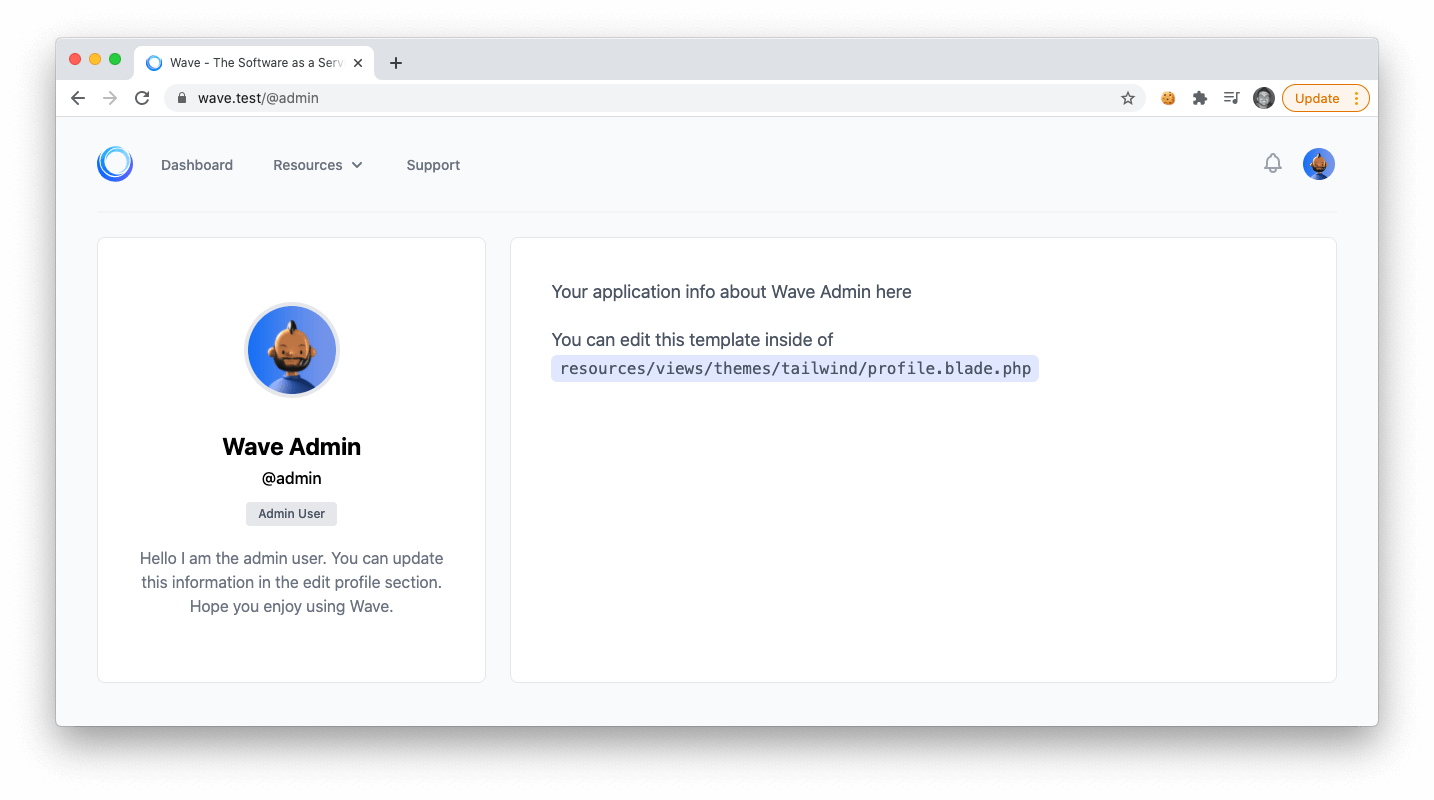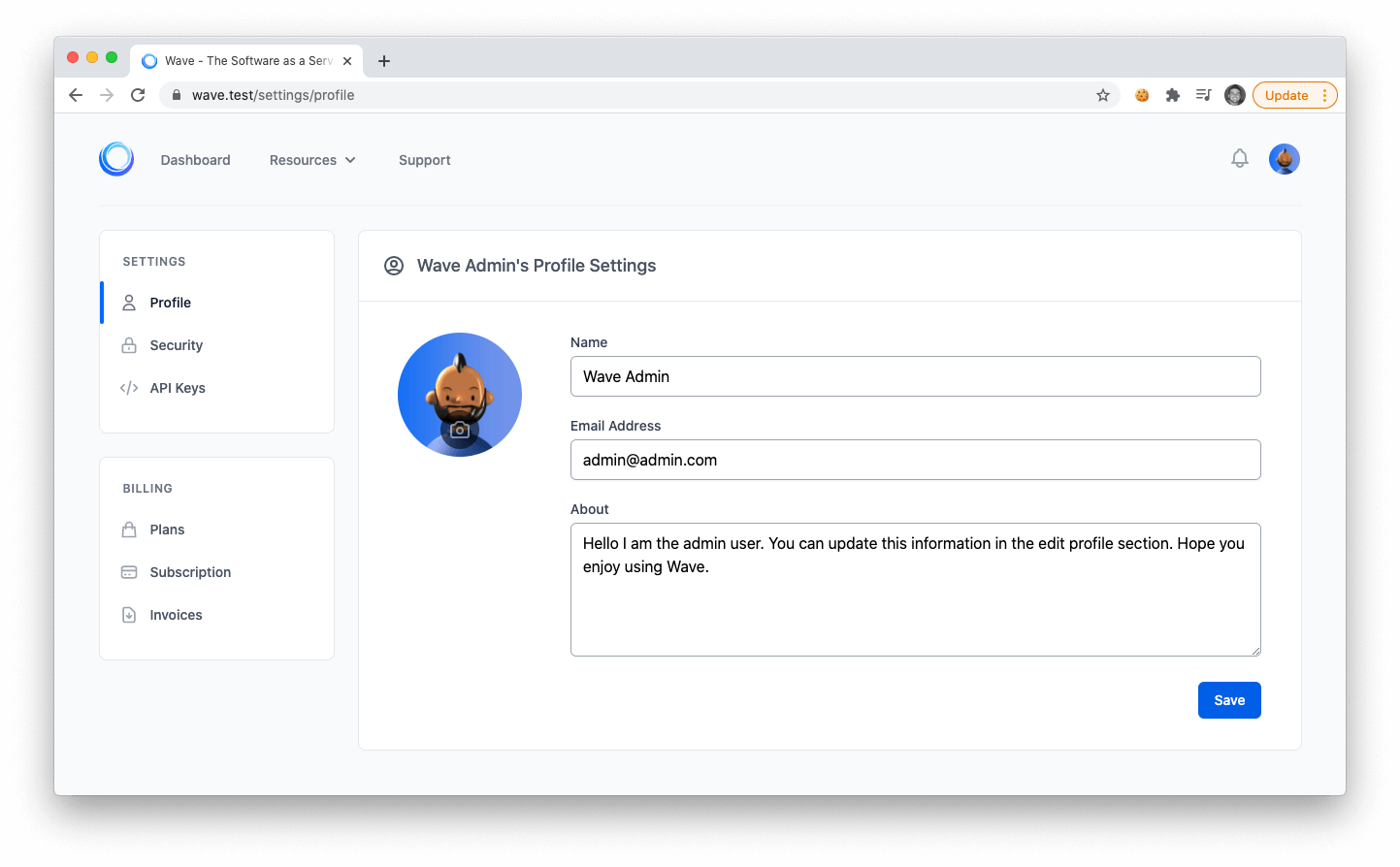User Profiles
When building your SAAS application you may want your users to provide more information. With profiles and profile fields this couldn’t be easier. Let’s dig into how this works.
User Profile Page
Every user in your application will have a public profile page. The user will be able to visit /@username and view their profile. By default the profile page is public, which means anyone can visit that user profile.

In some applications you may not have a need for a profile page. In that case, you can include the following route to your applications routes/web.php
Route::redirect('@{username}', '/');
This will disable user profiles and redirect any user profile page back to the homepage.
{warning} When disabling user profiles, the route must be placed after the
Wave::routes();line.
User Profile Settings
When a user registers for an account they will be able to edit their profile information by clicking on the settings in their user drop down.
On the user profile page the user can update their avatar, name, and email address. You will also see one more field, called about, this is an example of a custom profile field. Let's learn more about custom profile fields below.

Custom Profile Fields
Custom profile fields allow you to add new fields in your user settings page. In the current theme you'll see a custom field called about. The about text_area can be generated with the following code:
echo profile_field('text_area', 'about')
{primary} This line of code can be found in each theme, which is located at:
resources/views/themes/{theme_name}/settings/partials/profile.blade.php.
The profile_field($type, $key) function takes 2 arguments. The type of field, and the key.
We can then use the key to reference the value of the users custom profile value. For instance to display the user's about value we can do the following:
auth()->user()->profile('about');
The about field uses a text_area type to display a text area. In the next part we will list the different types of profile fields you can display.
Profile Field Types
- checkbox - display a form check box
- code_editor - display a code editor (may require additional js libraries)
- color - display a color picker
- date - display a date picker (may require additional js libs)
- file - display a file input
- hidden - display a hidden input
- image - display an image input
- markdown_editor - display a markdown editor (more js required)
- multiple_images - display multiple image input
- number - display a number input
- password - display a password input
- radio_btn - display a radio button input
- rich_text_box - display a rich text editor (requires tinymce js)
- select_dropdown - display a select dropdown input
- text - display a textbox input
- text_area - display a text area input
You can use any of the profile field types above in the first argument of the profile_field($type, $key) function, and use any key (string) as the second argument.
Then, you can reference the value by calling:
$user = User::find(1);
$user->profile($key);
Or you can retrieve the profile value from the authenticated user like so:
auth()->user()->profile($key);